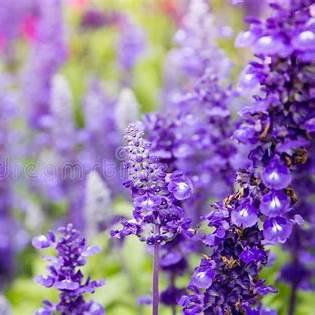Planting Lavender
Lavender is a sun-loving plant that requires full sun and excellent air circulation to flourish. Choosing the right location is the first step to successful lavender care. Most lavender varieties thrive in areas with 6 to 8 hours of sunlight daily, so pick a sunny spot in your garden.
When planting lavender, space the plants about 12 to 18 inches apart to ensure proper airflow, which reduces the risk of fungal diseases. For larger varieties like ‘Grosso’ or ‘Provence,’ increase spacing to 24 inches. Spring is the best time to plant lavender, as it allows the roots to establish before the intense heat of summer.
Lavender Planting Guide:
- Dig a hole twice as wide as the root ball.
- Remove the plant from its container and gently loosen the roots.
- Place the lavender in the hole, ensuring the crown is slightly above soil level.
- Backfill with soil, pressing gently to remove air pockets.
Soil Preparation
The soil for lavender is one of the most critical factors for its success. Lavender prefers well-draining soil with a pH of 6.5 to 7.5. Heavy clay soils should be amended with organic compost and sand to improve drainage, while sandy soils may benefit from the addition of aged manure or compost to enhance nutrient content.
Raised beds or mounds are excellent for ensuring proper drainage, especially in regions with heavy rainfall. Avoid over-fertilizing; lavender thrives in nutrient-poor soil, and excessive nutrients can lead to leggy plants with reduced blooms.
Sustainable Lavender Growing Tips:
- Add coarse sand or gravel to the planting area to mimic the natural Mediterranean habitat of lavender.
- Use organic compost or mulch to retain moisture without waterlogging the roots.
- Test soil pH regularly and adjust using lime or sulfur to maintain the ideal range.
Watering Lavender
Although lavender is drought-tolerant once established, it requires regular watering during the first year to encourage healthy root development. However, overwatering is one of the most common mistakes when caring for lavender, as it can lead to root rot.
A general rule of thumb is to water lavender deeply but infrequently. Allow the soil to dry out between waterings, and reduce irrigation during the winter months.
Lavender Watering Tips:
- Water newly planted lavender once or twice a week until established.
- Mature plants only need watering every two to three weeks, depending on weather conditions.
- Use drip irrigation systems for consistent moisture and to prevent wetting the foliage.
Pruning Techniques
Pruning is essential for maintaining the health, shape, and vigor of your lavender plants. Regular pruning encourages new growth, prevents the plant from becoming woody, and enhances flower production.
The best time to prune lavender is after it blooms, typically in late summer or early fall. Use clean, sharp pruning shears to avoid damaging the plant.
How to Prune Lavender:
- Remove spent flower stems just above the first set of leaves.
- Trim back about one-third of the plant’s growth, avoiding cutting into old, woody stems.
- For young plants, pinch off the tips to encourage bushier growth.
If your lavender has become woody, rejuvenation pruning can help, but this process should be done gradually over two or three seasons to avoid shocking the plant.
Best Lavender Varieties for Beginners
For gardeners new to growing lavender, selecting the right variety can make all the difference. Some varieties are more forgiving than others, making them ideal for beginners.
- English Lavender (Lavandula angustifolia): Known for its sweet fragrance and compact growth, English lavender is perfect for beginners. Popular cultivars include ‘Munstead’ and ‘Hidcote.’
- French Lavender (Lavandula dentata): This variety features unique, fringed leaves and a lighter scent, making it a striking addition to any garden.
- Lavandin Hybrids (Lavandula x intermedia): These vigorous growers, like ‘Grosso’ and ‘Phenomenal,’ are hardy and produce abundant blooms, ideal for those looking to harvest lavender for crafts or oils.
Organic and Sustainable Lavender Care
Lavender thrives in low-maintenance, sustainable gardening systems. By mimicking its native Mediterranean environment, you can grow lavender organically with minimal effort.
- Mulching: Apply organic mulch such as gravel or shredded bark around the base of the plants to conserve moisture and suppress weeds. Avoid using dense, water-retentive materials like straw or leaf mulch.
- Natural Pest Control: Lavender is naturally pest-resistant due to its strong fragrance, but aphids or whiteflies may occasionally appear. Use insecticidal soap or introduce beneficial insects like ladybugs to keep pests in check.
- Composting: Enrich your soil with homemade compost to reduce reliance on chemical fertilizers and support healthy, organic growth.
Common Challenges in Growing Lavender
While lavender is generally a hardy plant, a few common issues may arise, especially for beginners. Recognizing these challenges early can help ensure the success of your lavender plants.
- Root Rot: Caused by poor drainage or overwatering. Improve soil drainage and water sparingly.
- Powdery Mildew: This fungal disease can develop in humid climates. Ensure proper airflow by spacing plants appropriately and pruning regularly.
- Woody Growth: Over time, lavender may develop woody stems. Prune annually to promote fresh, green growth and prevent excessive woodiness.
In Summary
Lavender is a versatile, fragrant flower that brings beauty, functionality, and a touch of Mediterranean charm to any garden. With proper planting, soil preparation, watering, and pruning techniques, even beginners can enjoy the rewards of this resilient herb. Select the best lavender varieties for your climate and growing conditions, and focus on sustainable practices to ensure long-lasting success.
By following this lavender growing guide, you’ll be well on your way to creating a thriving lavender garden that fills your space with its signature fragrance and vibrant blooms. Whether used for crafts, oils, or simply as a beautiful ornamental, lavender is a garden treasure worth cultivating.
For more information, see our article on Specialty Tips for Large Lavender Plants, and don’t miss our seasonal guide on Overwintering Lavender for frost protection, wind barriers, and indoor care strategies.





